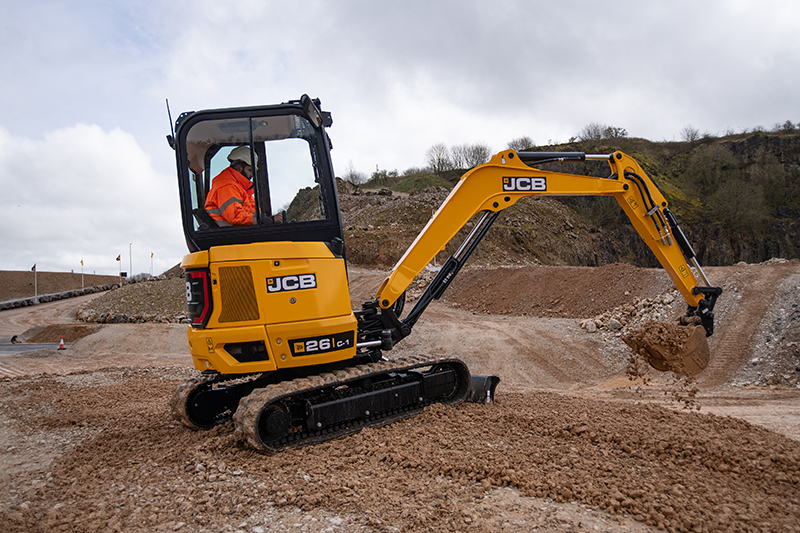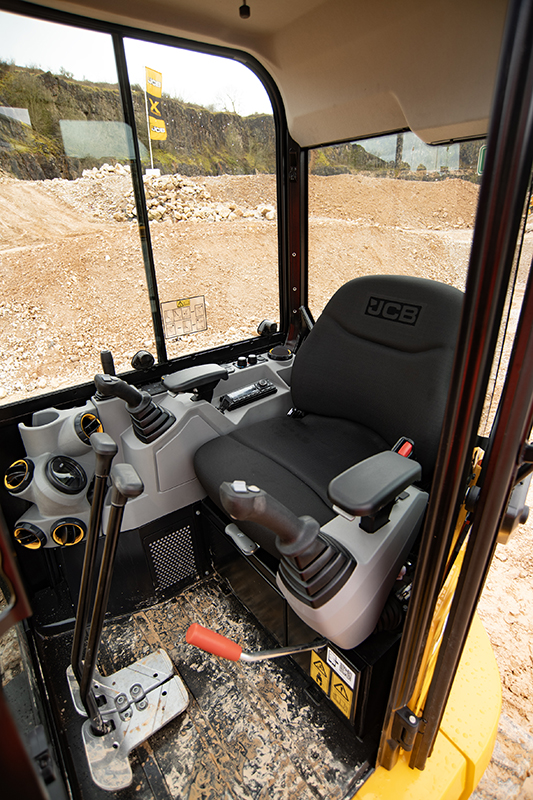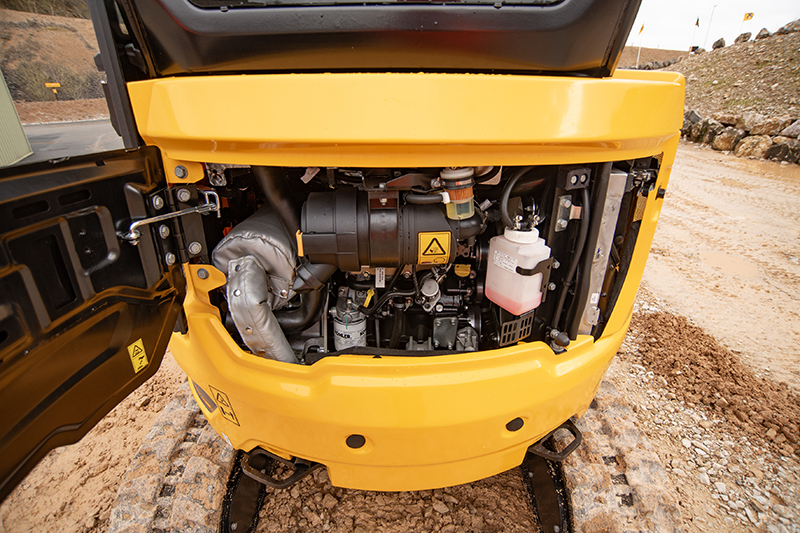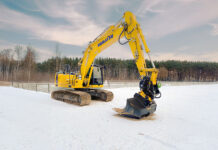JCB is expanding its Next Generation line of mini and midi-excavators, with the launch of two 2.5-tonne models. Here, Dan Gilkes gives his take on what he believes will become important additions to the portfolio.
THE 25Z-1 is a zero tailswing machine, while the 26C-1 offers the benefits of a conventional tailswing. That said, both machines have the option of a further 120kg bolt-on counterweight section, that increases tailswing by around 100mm, if the customer prefers. This aids stability if the machine is regularly used for heavy lifting.
Both models weigh in at around 2.5-tonnes, with the 26C-1 the heaviest at 2,675kg. That means that either of these mini machines can easily be carried, with three buckets and a mechanical quick-hitch, on a 3.5-tonne trailer behind a large van or a 4×4. This operating and transportation weight will make the two mini-excavators popular with utilities, plant hire and contractors.
Despite the zero tailswing layout of the 25Z-1, both machines share the same spacious Next Generation cab. Constructed of robust steel panels and easy to replace flat glazing, the cab door can be locked open within the profile of the machine, reducing the risk of damage.
Equipped with a cab heater, the ROPS/TOPS structure will be available with an air conditioning option later this year. Alternatively, either model can be specified with a canopy if preferred.
The minis use a completely new dig end, that has been produced in response to customer input. All of the hydraulic hoses pass through the main boom, reducing the risk of catching and the colour-coded hoses have bulkhead couplings to make it easier to change a damaged hose if required. Having the hoses inside the boom, which is itself slimmer than on the previous model, also improves the view into the digging area. The LED work lights are also mounted inside the boom structure.
A factory-fit quick-hitch is available as an option and JCB has designed a new range of lightweight buckets for the machines. These use the same 35mm pin diameters as the outgoing model, allowing customers to upgrade without having to replace their attachments. A heavy-duty bushed kingpost further strengthens the dig end.
The main boom is 280mm longer on the 26C-1, as its conventional layout allows increased digging and lifting without compromising stability. Both machines are offered with a choice of 1,100mm or 1,300mm dipper lengths.
A 48lpm high flow auxiliary hydraulic supply is standard, while a 25lpm low-flow circuit is available as an option. Main boom and dozer cylinder guards are standard and customers can opt for additional guards on dipper and bucket cylinders. A revised dozer blade delivers improved material rollover and there is the option of a 210mm longer dozer for those that like to dig to the blade.
New track motors deliver improved tractive effort and the machines are available with 300mm rubber tracks or optional 250mm rubber tracks.
As with other Next Generation models, there are nine sturdy tie-down points around the machines, so there should be no need for transport drivers to throw chains or straps across the rubber tracks when moving the machines.
As mentioned, the upper structure uses sturdy steel panels and doors all round. The fixing bolts for all of the panels are the same, so service engineers only require one socket to remove any panel. Both models are powered by a Stage V Kohler diesel engine developing 18.4kW (24.7hp). The engine meets both EU Stage V and the Tier 4 Final emissions standards with no requirement for a Diesel Particulate Filter or any exhaust after-treatment.
The engine drives a variable displacement, load-sensing, electro proportional hydraulic system. A new valve block provides improved flow sharing for multi-tasking at lower rpm.
Both the engine and the main valve block have been relocated for easier access and all filters and fill points are easy to get to on the right-hand side of the machines. The minis also have a removable floor plate that provides access to the valve block.
Once in the cab, both side windows can be opened, to suit operator preference. The lower windscreen section can be clipped inside the upper section, which can then be stored in the cab roof, providing an improved view to the digging area. The suspension seat is comfortable and it is possible to raise and lower the arm rests for improved comfort when working the proportional joysticks.
The 2.5-tonners use the same 4” main screen as the larger 3.5-tonne models, with a rotary controller providing movement through the menus. The screen can also be used to set hydraulic pressures and the percentage of hydraulic flow for up to 10 powered attachments. Service engineers can access diagnostic information through the screen’s menus during regular maintenance too.
The 25Z-1 and 26C-1 are an important addition to the Next Generation line-up for JCB, filling the final gap in that revised range other than the ultra-compact Micro. More importantly, for those customers looking to tow a mini excavator to and from site, the two machines offer the largest capacity that can be carried behind a van or 4×4, making them a popular choice in many industry sectors.
With a robust build quality and an impressive specification, JCB’s 25Z-1 and 26C-1 offer a big step forward from their 8025 ZTS and 8026 CTS predecessors.













